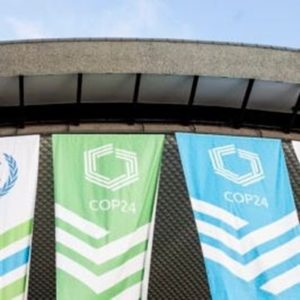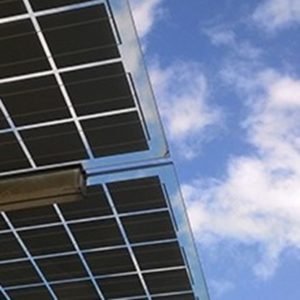As we reflect upon the progress Indonesia has made on climate finance in 2018, we anticipate an even more momentous 2019. Some highlights, from our perspective, include:
COP24 Highlights
 The COP24 ended with adoption of a “rulebook” containing guidelines for the Paris Agreement’s implementation in 2020. The rules for climate finance reporting under Article 9 of the Paris Agreement make it mandatory for developed countries and voluntary for developing countries to report biennially on any climate finance provided or committed, hopefully paving the way for more granular and uniform data for analysis of finance effectiveness.
The COP24 ended with adoption of a “rulebook” containing guidelines for the Paris Agreement’s implementation in 2020. The rules for climate finance reporting under Article 9 of the Paris Agreement make it mandatory for developed countries and voluntary for developing countries to report biennially on any climate finance provided or committed, hopefully paving the way for more granular and uniform data for analysis of finance effectiveness.COP24 also served as an important place to continue building knowledge and scale on climate finance more generally, and in total the CPI global team hosted five panels and participated in 15 events at the COP24 Pavilions, including an event on the importance of fiscal policy and blended finance to mobilize public and private capital, as well as a panel on blended finance for marine conservation featuring the Indonesian Minister of Bappenas, the Seychelles Minister of Environment, OECD, ADB, and RARE.
One step closer to the Environmental Fund
 In September 2018, the Government of Indonesia finally issued Presidential Regulation No 77/2018 that mandates the establishment of an Environment Fund managed via a public services agency (badan layanan umum).
In September 2018, the Government of Indonesia finally issued Presidential Regulation No 77/2018 that mandates the establishment of an Environment Fund managed via a public services agency (badan layanan umum).CPI Indonesia has worked since 2016 with the Ministry of Environment and Forestry to facilitate the design and inter-ministerial discussions leading up to the Environment Fund establishment. The Ministry of Finance is currently working on a regulation to formally establish the Fund, which is designed to channel payments for emissions reductions activities, and to receive revenues from multiple sources both public and private. Once established, the Fund will be the first public services agency able to receive international donor funding. In 2019 we hope to see the Fund’s establishment, as well as the beginning of the Fund’s operations.
Emerging importance of blended finance tools
 In October 2018, PT Sarana Multi Infrastuktur (PT SMI) and the Ministry of Finance launched SDG Indonesia One (SIO) Fund, an integrated platform that supports funding for SDG-related projects through blended finance instruments. At the day of the launch, SIO attracted investment commitments of up to USD 2.3 billion – an incredible achievement, highlighting the level of investment possible when instruments are designed correctly.
In October 2018, PT Sarana Multi Infrastuktur (PT SMI) and the Ministry of Finance launched SDG Indonesia One (SIO) Fund, an integrated platform that supports funding for SDG-related projects through blended finance instruments. At the day of the launch, SIO attracted investment commitments of up to USD 2.3 billion – an incredible achievement, highlighting the level of investment possible when instruments are designed correctly.CPI Indonesia was one of 22 partner organizations to sign a Letter of Intent supporting the SIO implementation at the launch. CPI Indonesia provided technical assistance to PT SMI in designing the SIO platform – drawing on our experience designing innovative financing schemes through The Global Innovation Lab for Climate Finance.
In 2019, we hope to see SIO begin to alleviate the financial barriers hampering projects and attract more private financing at scale.
What’s next for renewable energy finance?
 In 2018, CPI Indonesia released two new publications on renewable energy finance. The first, “Energizing Renewables in Indonesia: Optimizing Public Finance Levers to Drive Private Investment”, finds that between 2012 and 2016, public finance provided by the Government of Indonesia to support clean energy development amounted to at least IDR 12.4 trillion. It also shows that these funds would have higher impact if spent through a certain few financial instruments.
In 2018, CPI Indonesia released two new publications on renewable energy finance. The first, “Energizing Renewables in Indonesia: Optimizing Public Finance Levers to Drive Private Investment”, finds that between 2012 and 2016, public finance provided by the Government of Indonesia to support clean energy development amounted to at least IDR 12.4 trillion. It also shows that these funds would have higher impact if spent through a certain few financial instruments.The second study, “Energizing Finance: Understanding the Landscape 2018”, is part of a global study to capture investment in two key areas of energy access: electrification and clean cooking. It finds that globally, energy access investments continue to fall far short of what is needed to close the energy access gap, and heavily favor non-residential customers (industrial and commercial sectors), as well as fossil fuel and grid solutions. Off-grid solutions remain miniscule at 1.3% of the total finance, despite the fact that these investments need to be increased if we want to see increased quality of life and electricity access to those who need it the most.
In 2019, expect more analysis from CPI in the area of renewable energy finance, particularly as we look at a closer depth into the costs of financing solar power and energy efficiency projects.
Sustainable regional growth means economically diverse growth
 In 2018, CPI Indonesia released three new publications on optimizing land use finance in regional areas, finding, overall, that a stronger case should be made for diversified livelihoods, instead of a single-commodities based regional economy, to support land intensification.
In 2018, CPI Indonesia released three new publications on optimizing land use finance in regional areas, finding, overall, that a stronger case should be made for diversified livelihoods, instead of a single-commodities based regional economy, to support land intensification.The first study, “Indonesia’s Village Fund: An Important Lever for Better Land Use and Economic Growth at the Local Level”, looks at how the Village Fund has been spent predominantly on a single sector and could be optimized to support sustainable land use activities.
The second study, “Towards a More Sustainable and Efficient Palm Oil Supply Chain in Berau, East Kalimantan”, looks at how Berau can reach optimal palm oil production and meet mill capacity needs with minimal land expansion, but needs to address several challenges currently faced by smallholders, particularly access to finance. In East Kalimantan where crops are relatively young, finance for replanting is not yet viable, and therefore attracting financing by diversifying livelihoods is the more viable option needing further exploration.
The third study, “Empowering Oil Palm Smallholder Farmers through Alternative Livelihoods”, delves deeper into the business model aspects of two alternative livelihoods for oil palm smallholders that could promote better access to finance as well as maintain land intensification: cattle feed and fisheries, with application specifically to the East Kotawaringin and Katingan districts of Central Kalimantan. While both business models yield promise for scale and profitability, fish cultivation requires lower investment and maintenance.

